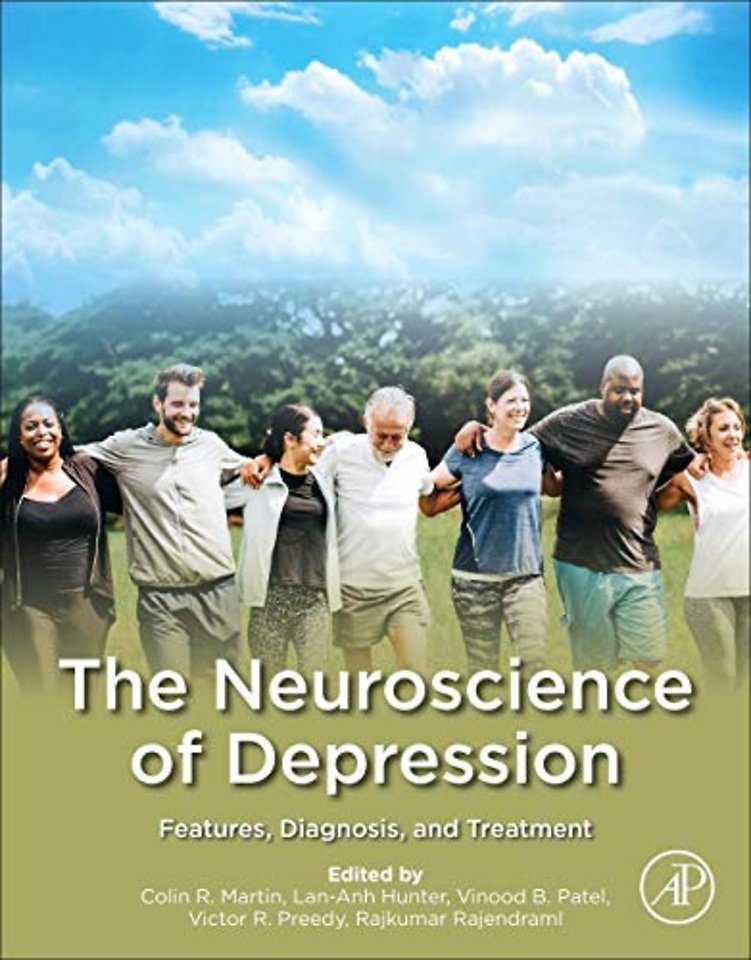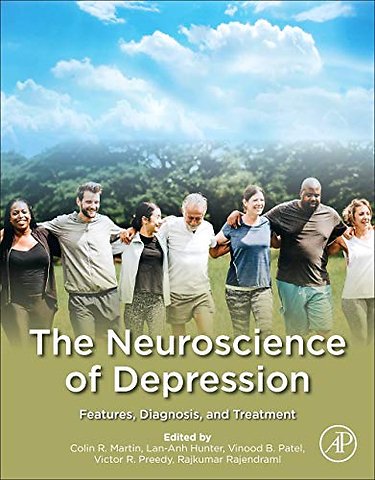<p>I. Depression: Introductory Chapters<br>1. Clinical staging in depression<br>2. Neurodevelopmental theory of depression<br>3. Depression after pregnancy <br>4. Modeling maternal depression during pregnancy: Rodent models of Major Depressive Disorder with Peripartum Onset<br>5. Depression in mothers and mental health in children: Impact, risk factors and interventions<br>6. Depression in college students<br>7. Depression in disasters and traumatic events<br>8. Depression and associated Alzheimer s disease<br>9. Comorbidities of depression and Parkinson's disease<br>10. Understanding the relationship between depression and alcohol among students<br>11. Depression in obesity<br>12. Depression and heart rate variability<br>13. Neuroinflammation and depression<br>14. Interlinking antidepressants and the immune system</p> <p>II. Biomarkers and Diagnosis <br>15. Assessment scoring tools of depression<br>16. The Beck Depression Inventory: Uses and applications<br>17. The Hamilton Depression Rating scale: Uses and applications<br>18. The Patient Health Questionnaire (PHQ)<br>19. Screening for Antenatal Depression (AND) using self-report questionnaires: Conceptual issues and measurement limitations<br>20. Edinburgh Postnatal Depression Scale: Description and applicationsJacqueline <br>21. The Death Depression Scale: Description and applications <br>22. Depression Anxiety Stress Scales: Features and Applications <br>23. Arabic version of the two-question Quick Inventory of Depression: Description and applications (QID-2-Ar) <br>24. Depressive Symptoms and Biomarkers of Cardiovascular Disease<br>25. Thioredoxin as an antioxidant protein as a marker in depression<br>26. Methods of neuroimaging in depression: Applications to resting-state functional connectivity <br>27. Neural markers of depression in MRI</p> <p>III. Pharmacological Treatments for Depression<br>28. Angiotensin receptor 1 blockade as an antidepression strategy<br>29. Cannabinoid CB1 receptors and antidepressant effects<br>30. Agomelatine: profiles and applications to depression<br>31. Bumetanide and use in depressive states <br>32. Linking citalopram, serotonin reuptake inhibitors and depressed pregnant women <br>33. Citalopram and usage in sleep-deprivation-induced depression<br>34. Monoaminergic System and Antidepressants<br>35. Duloxetine usage in depression<br>36. Escitalopram and blonanserin as antidepressant agents linking in neurotrophic mechanisms<br>37. Ketamine and the role of (2R,6R)-Hydroxynorketamine in depression<br>38. Linking 5-Hydroxytryptamine, antidepressant actions of (R)-Ketamine and social stress model <br>39. Mirtazapine: Multi-target strategies for treating substance use disorder and depression</p> <p>IV. Counselling, Psychotherapy and Behavioural Treatments for Depression<br>40. Mindfulness-based cognitive therapy and depression <br>41. Online (web based) programs for depression<br>42. Clay art therapy on emotion regulation: Research, theoretical underpinnings, and treatment mechanisms <br>43. Solution-focused counselling: and use in postpartum depression<br>44. Transcranial direct current stimulation (tDCS) combined with cognitive emotional training (CET) as a novel treatment for depression</p> <p>V. Other Aspects of Treatment: Specific Groups, Monitoring and Novel Regimens<br>45. Putative effects of cannabidiol in depression and synaptic plasticity<br>46. Tanscutaneous vagus nerve stimulation in depression<br>47. Exercise for depression as a primary and comorbid with obesity disorder: A narrative<br>48. Acupressure and depression: a scientific narrative<br>49. Potential beneficial effects of Bifidobacterium breve A1 on cognitive impairment and psychiatric disorders <br>50. Coenzyme Q and use in depression <br>51. Gene expression in Major Depressive Disorder: peripheral and brain based studies <br>52. Electroconvulsive therapy for depression: effectiveness, cognitive side-effects and mechanisms of action <br>53. Depression and offspring DNA methylation <br>54. Other Aspects of Treatment: Specific Groups, Monitoring and Novel Regimens: Treating depression with Theta burst stimulation (TBS)</p>

